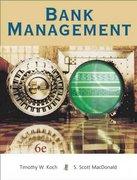Question
Provide solutions.to the following questions. There are two types of individuals: high ability (type H) and low ability (type L). Regardless of their level of


Provide solutions.to the following questions.
There are two types of individuals: high ability (type H) and low ability (type L). Regardless of their level of education, the lifetime productivity of an H type is VMPH, while the lifetime value of the marginal product of an L type is VMPL
1.
Suppose that if an L type is indifferent between getting SL years of education and being
viewed as an L type and getting SH years of education and being viewed as an H type, he/she
chooses SL. Derive the conditions that determine whether a separating equilibrium in which SH
years of schooling serves as a signal of high ability exists.
2.
Let S* denote the minimum SH such that a separating equilibrium exists. What happens
to S* if SL increases by one year? What happens to S* if CL decreases slightly?
Now suppose that after finishing their schooling, each type works for only two periods. Assume
that after a person works for one period, with probability p all the firms in the labour market learn
his/her true type (e.g., by observing his/her first-period output). With probability (1 - p) the firms
learn nothing new. Assume also that in each period, the L type produces VMPL = $40,000 while
the H type produces VMPH = $64,000. (Note that, unlike in part a, VMP is measured per period
here.) Finally, let CH = $4,000 and CL = $6,000, and assume that SL = 0.
3. Derive the conditions that determine whether a separating equilibrium in which SH years
of schooling serves as a signal of high ability exists.
4.
As before, let S* denote the minimum SH such that a separating equilibrium exists. What
happens to S* if it becomes more likely that firms learn workers' types from their output (i.e., if p
increases)?


Step by Step Solution
There are 3 Steps involved in it
Step: 1

Get Instant Access to Expert-Tailored Solutions
See step-by-step solutions with expert insights and AI powered tools for academic success
Step: 2

Step: 3

Ace Your Homework with AI
Get the answers you need in no time with our AI-driven, step-by-step assistance
Get Started


